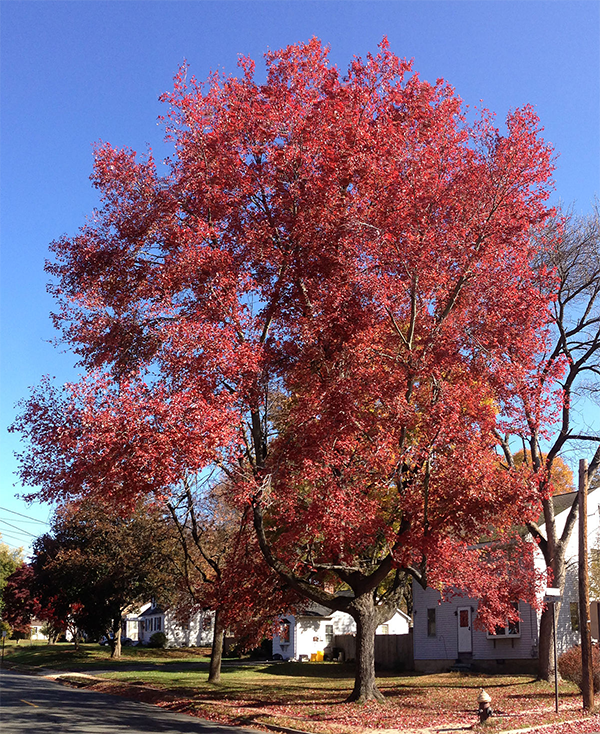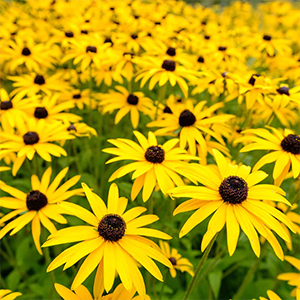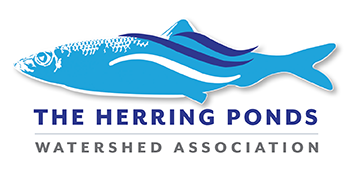Inviting Pollinators into Your Yard
 By Geri Williams
By Geri Williams
We’ve chosen to live in the Herring Ponds Watershed area because we enjoy the natural beauty and opportunities for recreation. Most of us try to enhance our property with trees, plants and lawn. But as we clean up after winter let’s try to think about what we can plant to help nature along. If we plant native plants and get rid of invasive species, (particularly offensive in our area are Oriental Bittersweet and Japanese Knotweed) we can help birds find the insects they need to feed their young. And also help all the various pollinators thrive – bees, wasps, ants, beetles, butterflies and moths and some birds and bats.
Pollinators are essential to all life on our planet. Scientists estimate up to 90% of our plants would be unable to reproduce without the pollinators. The vast majority of our flowering plants, from trees to flowers and vegetables, require pollinators. Today pollinators are being threatened by development, pollution, abuse of pesticides and other synthetic chemicals but each of us can take some simple steps to help protect our pollinators and plants.
Consider planting a native white oak, red or swamp maple or American Holly with some native shrubs such as blueberries, laurels, maple leaf viburnum or clethra underneath. You could also plant some native flowers that tolerate part shade such as foam flower, black eyed Susan, and woodland phlox around the tree. These are much more beneficial than pachysandra or grass. Grass is a monoculture that requires much water and fertilizer and provides very little pollen, nectar or nourishment for pollinators and birds.
So why not remove an area of grass and plant a pollinator garden? There is lots of information on the internet (https://www.massaudubon.org/learn/nature-wildlife/help-pollinators-thrive/plant-a-pollinator-garden , https://www.grownativemass.org ). Start with a diversity of native plants and shrubs. Choose species with flowers of different shapes, sizes, colors, and blooming times. Choose old-fashioned heirloom varieties and limit the use of modern hybrids with many petals and unusual colors. Single flowers are better for pollinators than doubles. Make sure the plants you buy have not been treated with pesticides especially neonicotinoids. Plant in masses of 3 or more plants to make it easier for the pollinators to spot them. Include host plants for caterpillars, such as milkweed and butterfly weed for Monarchs; and parsley, carrots and dill for swallowtails. Do not use pesticides and try to use compost or organic fertilizers as much as possible. Pollinators also need shelter and nesting habitat, many native bees use brush piles, tree stumps and open ground.
 If you are short on space or time, you can still help by tucking a few native plants into existing flowerbeds. Plants like black-eyed Susan and cone flower do double duty as nectar sources for pollinators and seeds in the fall for birds. Other people and pollinator favorites that are easy to grow here are garden phlox, coreopsis, bee balm, Cardinal flower, Stokes Aster, yarrow, various golden rod species and New England aster. Swamp azalea and clethra like moist soil and grow very well near our pond edge, as does blue flag iris. I have found that Morrison’s on Long Pond Rd. has a number of native plants for sale.
If you are short on space or time, you can still help by tucking a few native plants into existing flowerbeds. Plants like black-eyed Susan and cone flower do double duty as nectar sources for pollinators and seeds in the fall for birds. Other people and pollinator favorites that are easy to grow here are garden phlox, coreopsis, bee balm, Cardinal flower, Stokes Aster, yarrow, various golden rod species and New England aster. Swamp azalea and clethra like moist soil and grow very well near our pond edge, as does blue flag iris. I have found that Morrison’s on Long Pond Rd. has a number of native plants for sale.
I hope you are inspired to add some pollinator plants to your property and enjoy watching the visitors.

Comments
Inviting Pollinators into Your Yard — No Comments
HTML tags allowed in your comment: <a href="" title=""> <abbr title=""> <acronym title=""> <b> <blockquote cite=""> <cite> <code> <del datetime=""> <em> <i> <q cite=""> <s> <strike> <strong>